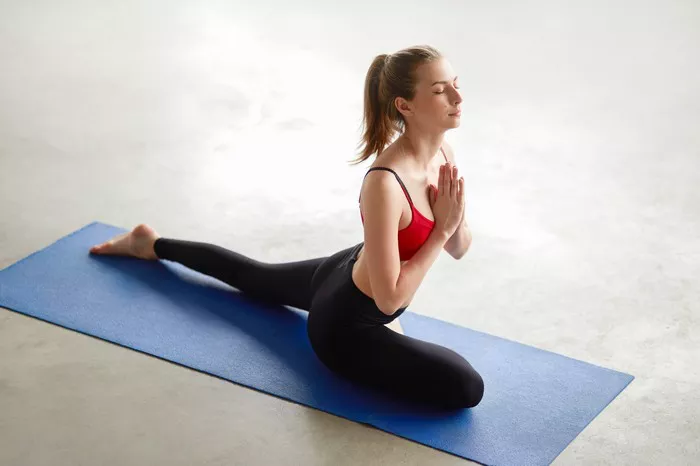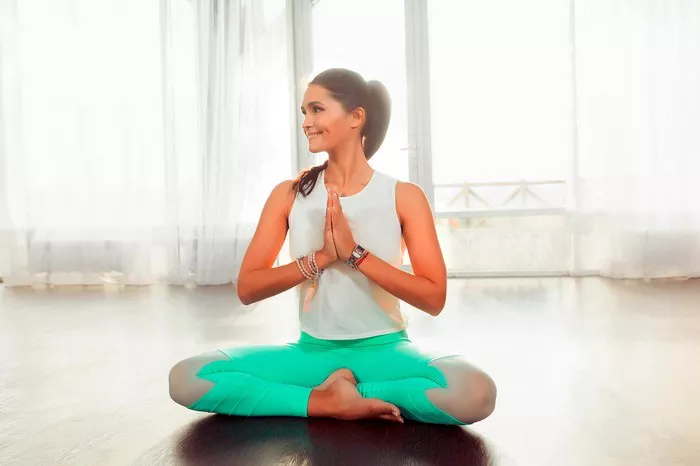Origins and Symbolism
Originating from the ancient practice of yoga, Pigeon Pose, or “Kapotasana” in Sanskrit, holds deep symbolic significance. The pose resembles a pigeon’s stance, hence its name. In Hindu mythology, the pigeon is revered as a symbol of love, peace, and devotion, making this pose not only a physical practice but also a spiritual one.
Physical and Mental Benefits
Pigeon Pose offers a plethora of benefits, both physical and mental. Physically, it targets the hips, groin, and lower back, making it an excellent stretch for those who sit for extended periods or engage in activities that tighten these areas. It also stimulates the abdominal organs, aiding digestion and elimination.
Mentally, Pigeon Pose can be deeply calming and meditative. Holding the pose requires focus and mindfulness, allowing practitioners to cultivate a sense of inner peace and serenity. Additionally, the deep hip opening can release stored emotions and tension, providing emotional release and catharsis.
Variations and Modifications
One of the beauties of yoga is its adaptability to suit individual needs and abilities. Pigeon Pose offers several variations and modifications to accommodate practitioners of all levels.
1. Reclining Pigeon Pose: This variation is ideal for beginners or those with limited flexibility. Instead of sitting upright, practitioners lie on their backs and place one ankle over the opposite knee, gently pressing the knee away from the body.
2. King Pigeon Pose: Also known as “Eka Pada Rajakapotasana,” this advanced variation involves bending the back leg and reaching back to grasp the foot with the hand, deepening the stretch in the quadriceps and hip flexors.
3. Supported Pigeon Pose: Using props such as blocks or bolsters can provide additional support and make the pose more accessible for those with tight hips or injuries.
Step-by-Step Instructions
Practicing Pigeon Pose mindfully and with proper alignment is essential to reap its full benefits. Follow these step-by-step instructions to perform the pose safely and effectively:
- Begin in a tabletop position on your hands and knees.
- Slide your right knee forward towards your right wrist, positioning it behind your right wrist and angling your right shin under your torso.
- Extend your left leg straight behind you, keeping your hips squared to the front of your mat.
- Lower your hips towards the ground, ensuring both hips remain level.
- If comfortable, walk your hands forward and lower your upper body towards the ground, resting on your forearms or forehead.
- Hold the pose for 5-10 deep breaths, focusing on releasing tension in the hips and surrendering to the stretch.
- To release, press into your hands and slowly walk your hands back towards your body.
- Repeat on the opposite side, switching the position of your legs.
Precautions and Contraindications
While Pigeon Pose offers numerous benefits, it’s essential to practice with caution, especially if you have any pre-existing injuries or conditions. Here are some precautions and contraindications to keep in mind:
1. Knee Injuries: If you have a knee injury or discomfort in the front knee, place a folded blanket or cushion under the hip of the bent leg for support and reduce the intensity of the stretch.
2. Lower Back Issues: If you experience discomfort in the lower back, avoid collapsing into the pose and focus on maintaining length through the spine. You can also use props such as blocks or bolsters for additional support.
3. Pregnancy: Pregnant individuals should avoid deep twists and excessive pressure on the abdomen. Instead, opt for supported variations of Pigeon Pose and consult with a qualified prenatal yoga instructor for guidance.
4. Recent Hip Injury: If you have a recent hip injury or experience pain in the hips during the pose, avoid deepening the stretch and listen to your body’s limitations. Gradually ease into the pose and stop if you feel any sharp or shooting pain.
Conclusion
In conclusion, Pigeon Pose is a versatile yoga asana with roots in ancient tradition and profound symbolism. By practicing this pose mindfully and with awareness of your body’s limitations, you can experience its myriad physical, mental, and emotional benefits while reducing the risk of injury. Remember to honor your body’s unique needs and consult with a qualified yoga instructor if you have any concerns or questions regarding the practice.
























